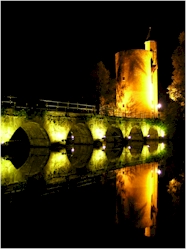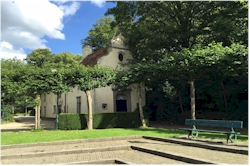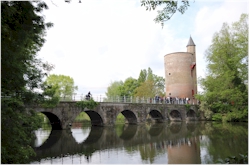|
Picture: Minnewater and Poertower |
|
» Eating » Sleeping facilities » Going out in Bruges » Fixed events » Beguinage » Belfry and halls » Chapel of the Holy Blood » Court of the Princes » Dunes abbey » Guild houses of Bruges » Hospices of Bruges » Jerusalem church » Nation houses » Our Ladies church » Poortersloge » St-Anna's church » St-Donatian's cathedral » St-John's hospital » St-Saviour's cathedral » Town gates » Town hall » Windmills of Bruges » Complete overview... » Archeology museum » Brangwyn museum » Brewery museum » Chocolate museum » Diamant museum » Folklore museum » Frites museum » Groeninghe museum » Guido Gezelle museum » Halve Maan » Lace museum » Lamps museum » Memling museum » Museum of Fine Arts » Salvador Dali museum » St-Janshuismill » St-John's hospital » Complete overview... » Boterhuis » Boudewijn Seapark » Burg » Canals (Reien) » Coupure » De Garre » Grote Markt » Historium » Huidevettersplein » Jan Van Eyckplein » Lake of Love (Minnewater) » Rozenhoedkaai » Simon Stevinplein » 't Zand » Complete overview... |
The Lake of Love (Minnewater) The Minnewater consists of a lake and a park. The lake is made in the 13th century as a reservoir that collected the water from the surrounding area with the goal to regulate the flow of the water in the center of the town via a sluice. Around the lake there were primarely grass fields and bleaching meadows.
Econonic activity started to develop around the lake in the 17th century when the canal Ghent - Bruges was dug. There was among other things a quay for a barge (passenger transport) to Ghent. The current stone brigde was built in 1739. Halfway the 19th century, the Minnewater lost its port function due to the silting up of the reservoir. In the 19th century, a number of new buildings in neogothic style are constructed around the lake such as the Minnewater hospital and the de la Faille castle. Only in 1979, the Minnewaterpark itself is opened. There are several theories about the origin of the name but in any way, it has nothing whatsoever to do with love. Although the area is very nice, even romantic at certain periods of the year, the name "Lake of Love" or "Lac d' Amour" is only inspired from touristic point-of-view (sorry for spoiling the illusion). The nickname is merely deducted from the Dutch verb (be)minnen which means to love.
Picture 1: The Poertoren and the
Minnewaterbridge at night |
» getting to Bruges » transport, tours, links,...
|
|
© xplorengo.com. Information is provided from the location and various sources, we do not hold any responsibility with regard to information provided by others. xplorengo is not a travel agency and does not promote or organize trips we therefore hold no responsibility with regard to third parties that promote their services via us. No information or pictures can be copied or distributed in any way without written permission of xplorengo.com. All pictures are made and copyrighted by Hendrik De Leyn unless mentioned otherwise [Contact information]. |
 The
reservoir was put inside the town when, at the end of the 13th
century, the second town wall was erected. At that time,
the first (wooden) Minnewaterbridge was built. For
protection, a round tower was built on each side of the brigde
(end of the 14th century). One of these two towers still
exists and is called the Poertoren. This tower was used
for the storage of gunpowder, hence its name. Through a
lock-chamber small ships could reach the inner town from the
Minnewater.
The
reservoir was put inside the town when, at the end of the 13th
century, the second town wall was erected. At that time,
the first (wooden) Minnewaterbridge was built. For
protection, a round tower was built on each side of the brigde
(end of the 14th century). One of these two towers still
exists and is called the Poertoren. This tower was used
for the storage of gunpowder, hence its name. Through a
lock-chamber small ships could reach the inner town from the
Minnewater. 
